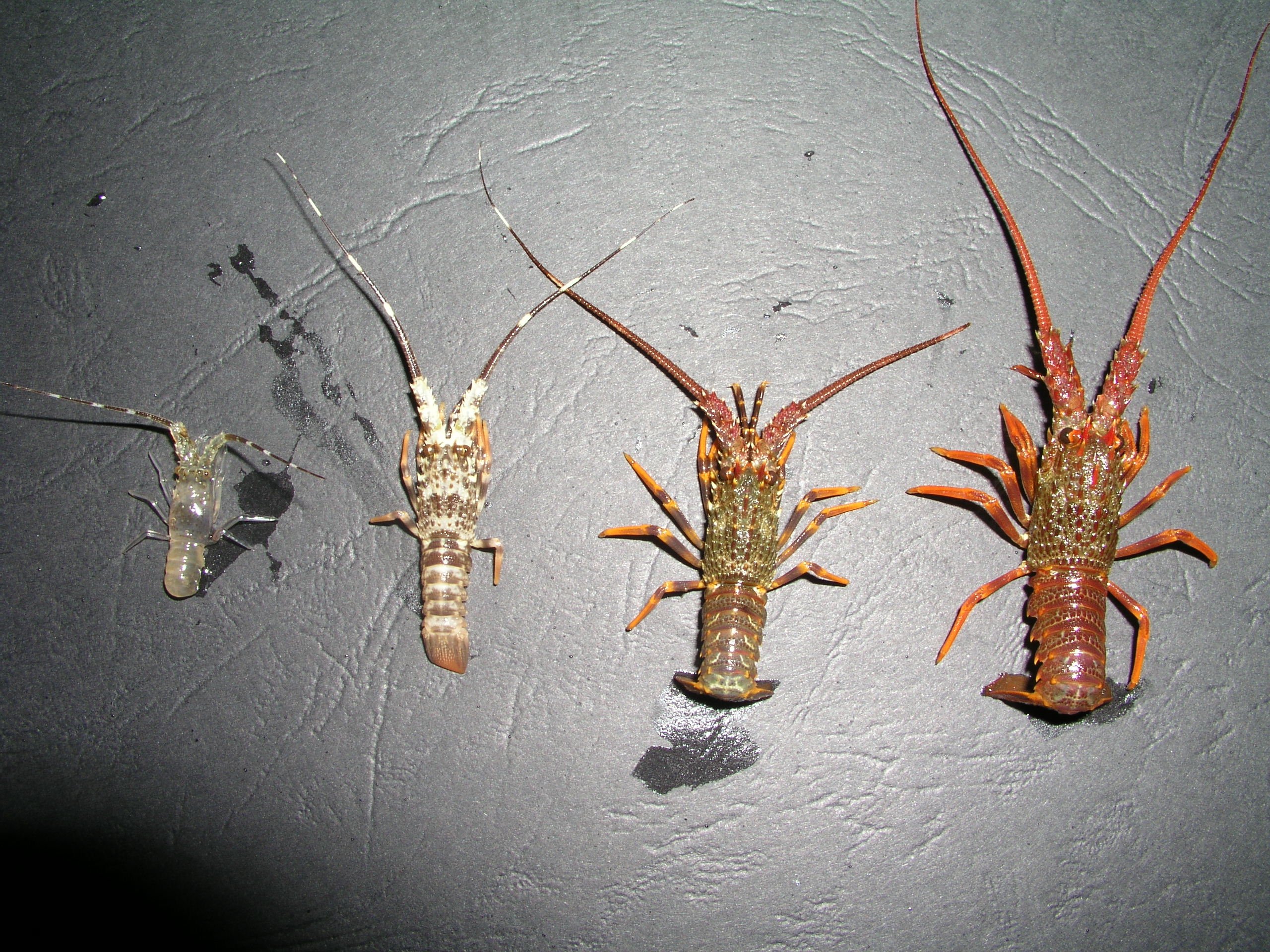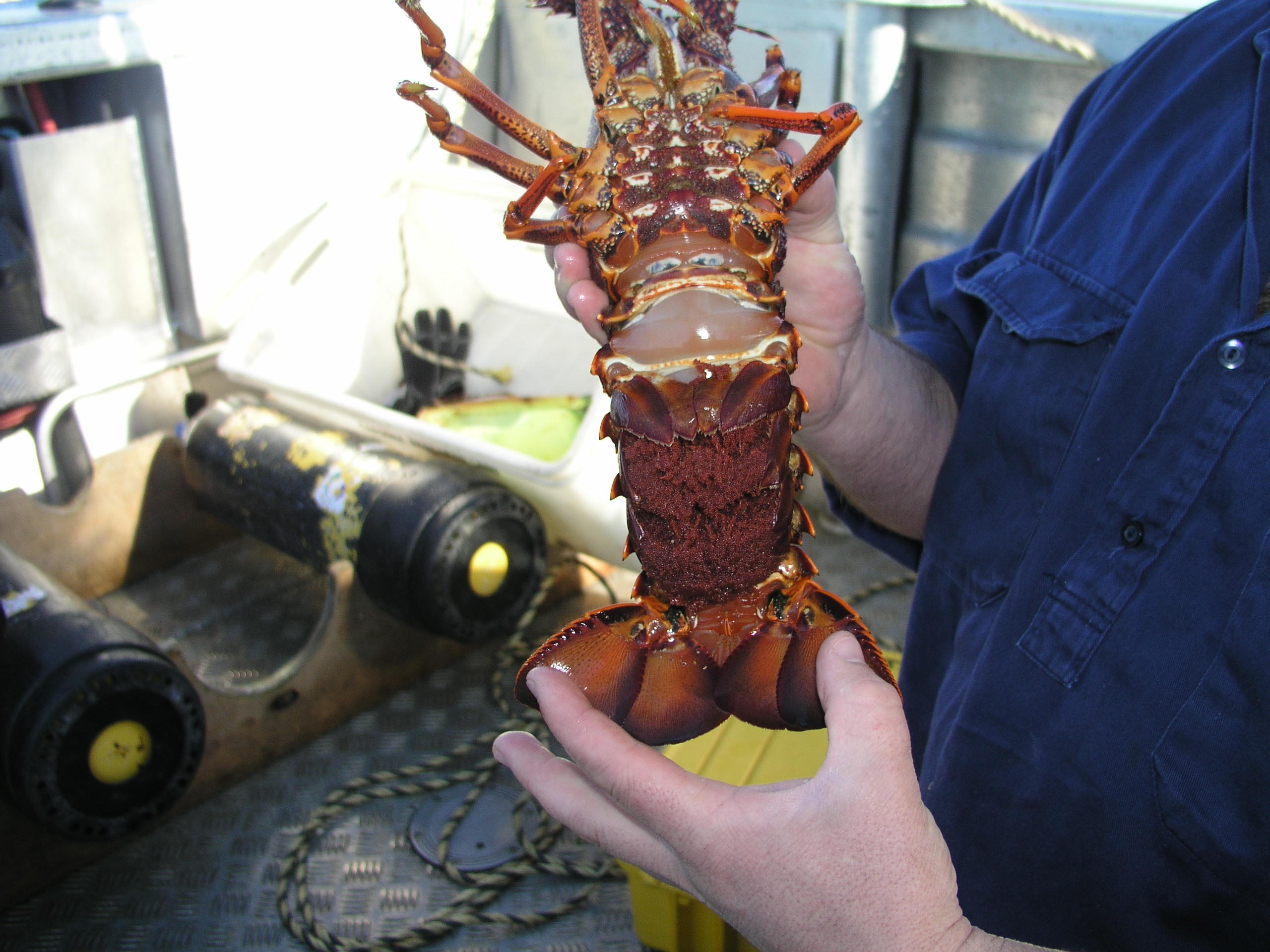Recruitment
The ability for scientists to predict future recruitment assists in decision making and reduces uncertainty in future fisheries outcomes. Unfortunately due to its biological characteristics there is greater uncertainty in future recruitment for Southern Rock Lobster than for many other species. The Southern Rock Lobster stock has high variability in recruitment success both spatially around the state and temporally between years. Recruitment is affected by patterns in larval dispersal and it’s known that the most important regions for larval sources tend to vary from year to year.

Stages of juvenile rock lobster growth.
A dramatic decline in recruitment into the fishery from the early 2000s led to substantial decreases in catch rates from 2006 onwards and a reduction of the TACC from 1523 to 1050.7t. Since the TACC reduction, catch rates have been steadily increasing. The mechanisms driving the decline in rock lobster recruitment is unknown. Understanding and carefully monitoring and managing this high spatial and temporal variability in southern rock lobster recruitment around Tasmania is important to avoid lost opportunities and decreased socio-economic benefit. IMAS scientists are currently undertaking research on larval dispersal and under-size recruits (puerulus monitoring) to better understand the processes driving recruitment variability.

Female with eggs (berried).

Larval Dispersal




